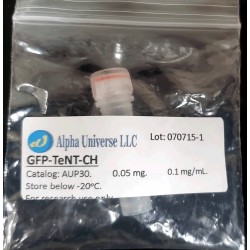Clostridium tetani
Clostridium tetani produces a potent neurotoxin called tetanus toxin. It is synthesized as a single polypeptide chain with Mr~150 kDa. Later, it undergoes limited proteolysis that generates two fragments: light (Mr~50 kDa) and heavy (Mr~100 kDa) chains. The mature toxin is composed of a heavy and a light chain that are linked via a disulfide bridge. The heavy chain recognizes specific receptors located on neurons and mediates transport of the light chain inside of them. The light chain that corresponds to the N-terminal part of the originally synthesized polypeptide chain is a metalloendoprotease. Inside of neurons, it selectively cleaves synaptobrevin, an integral membrane protein of synaptic vesicles. This cleavage results in inhibition of the release of neurotransmitters from presynaptic nerve endings.


